
The Royal Mile is a succession of streets forming the main thoroughfare of the Old Town of the city of Edinburgh in Scotland. The term was first used descriptively in W. M. Gilbert's Edinburgh in the Nineteenth Century (1901), describing the city "with its Castle and Palace and the royal mile between", and was further popularised as the title of a guidebook by R. T. Skinner published in 1920, "The Royal Mile (Edinburgh) Castle to Holyrood(house)".

Parliament House in the Old Town in Edinburgh, Scotland, is a complex of several buildings housing the Supreme Courts of Scotland. The oldest part of the complex was home to the Parliament of Scotland from 1639 to 1707, and is the world's first purpose-built parliament building. Located just off the Royal Mile, beside St Giles' Cathedral, Parliament House is also the headquarters of the Faculty of Advocates, the Society of Writers to His Majesty's Signet, and the Society of Solicitors in the Supreme Courts of Scotland. Other buildings in the complex include the Advocates Library and the Signet Library. The entire complex is a Category A Listed building.
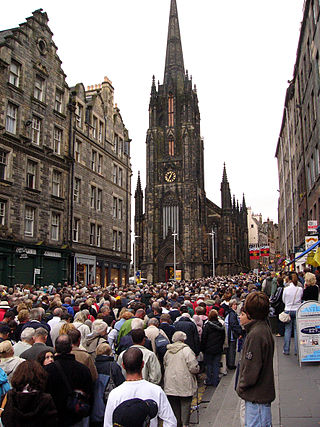
The Hub is a public arts and events building in the centre of Edinburgh, Scotland. Located at the top of the Royal Mile, it is a prominent landmark as its tall gothic spire is the highest point in central Edinburgh, and towers over the surrounding buildings below Edinburgh Castle.
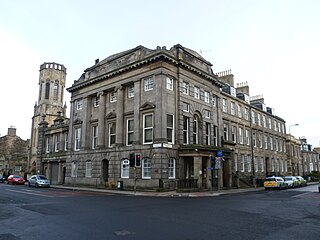
The Old Town Hall is a municipal building in Queen Charlotte Street, Leith, Scotland. The old town hall, which was the meeting place of Leith Burgh Council, is now used as a police station. It is a Category A listed building.

Perth Sheriff Court is an historic building on Tay Street in Perth, Perth and Kinross, Scotland. The structure, which is used as the main courthouse for the area, is a Category A listed building.

County Buildings is a municipal structure in King Erik Street, Lerwick, Shetland, Scotland. The structure, which is used as a judicial complex, is a Category B listed building.

Cupar Burgh Chambers is a municipal structure in St Catherine Street in Cupar, Fife, Scotland. The building, which was the meeting place of Cupar Burgh Council, is a Category B listed building.

The Justiciary Buildings is a judicial complex in the Saltmarket in Glasgow, Scotland. The complex, which operates in conjunction with similar facilities in Edinburgh and Aberdeen, is dedicated for the use of the High Court of Justiciary, which is the supreme criminal court in Scotland. It is a Category A listed building.

Falkland Town Hall is a municipal building in the High Street, Falkland, Fife, Scotland. The structure, which has been converted for use as offices and as shops, is a Category A listed building.

Tain Tolbooth is a municipal building in the High Street, Tain, Highland, Scotland. The structure, which is used as a courthouse, is a Category A listed building.
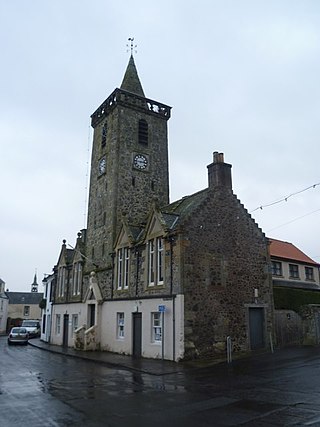
Auchtermuchty Town House is a municipal structure in the High Street, Auchtermuchty, Fife, Scotland. The structure, which accommodates the local public library, is a Category B listed building.

Wick Town Hall is a municipal building in Bridge Street, Wick, in the Highland area of Scotland. The structure, which is used as a community events venue, is a Category B listed building.
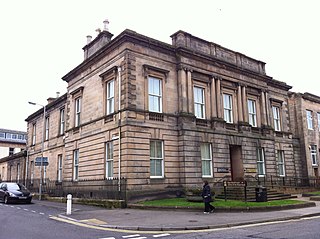
Elgin Sheriff Court is a municipal structure in the High Street, Elgin, Moray, Scotland. The structure, which was the headquarters of Morayshire County Council and remains in use as a courthouse, is a Category B listed building.
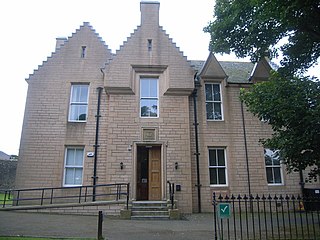
Kirkwall Sheriff Court is a judicial structure in Watergate, Kirkwall, Orkney, Scotland. The structure, which was the headquarters of Orkney County Council and is currently used as a courthouse, is a Category C listed building.

Paisley Sheriff Court is a municipal structure in St James Street, Paisley, Renfrewshire, Scotland. The complex, which was the headquarters of Renfrewshire County Council and is currently used as a courthouse, is a Category A listed building.

Dumbarton Sheriff Court is a judicial structure in Church Street, Dumbarton, West Dunbartonshire, Scotland. The complex, which was the headquarters of Dunbartonshire County Council and is currently used as a courthouse, is a Category B listed building.

County Buildings is a municipal structure in Ettrick Terrace, Selkirk, Scottish Borders, Scotland. The complex, which was the headquarters of Selkirkshire County Council and was also used as a courthouse, is a Category B listed building.

County Buildings is a municipal structure in Drysdale Street, Alloa, Clackmannanshire, Scotland. The structure, which was the headquarters of Clackmannanshire County Council and is currently used as courthouse, is a Category B listed building.
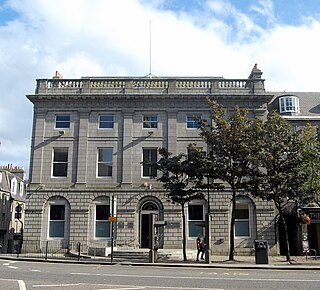
The Aberdeen Sheriff Court Annex and High Court of Justiciary, also known as Mercatgate, is a judicial building in Castle Street, Aberdeen, Scotland. The building, which operates in conjunction with similar facilities in Edinburgh and Glasgow, is provided for the use of the High Court of Justiciary, which is the supreme criminal court in Scotland. It is a Category A listed building.
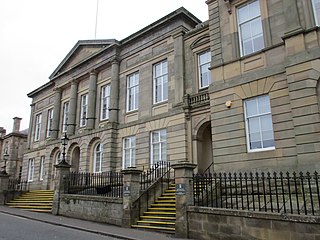
Lanark Sheriff Court is a judicial building in Hope Street, Lanark, South Lanarkshire, Scotland. The building, which continues to serve as the local courthouse, is a Category B listed building.





















